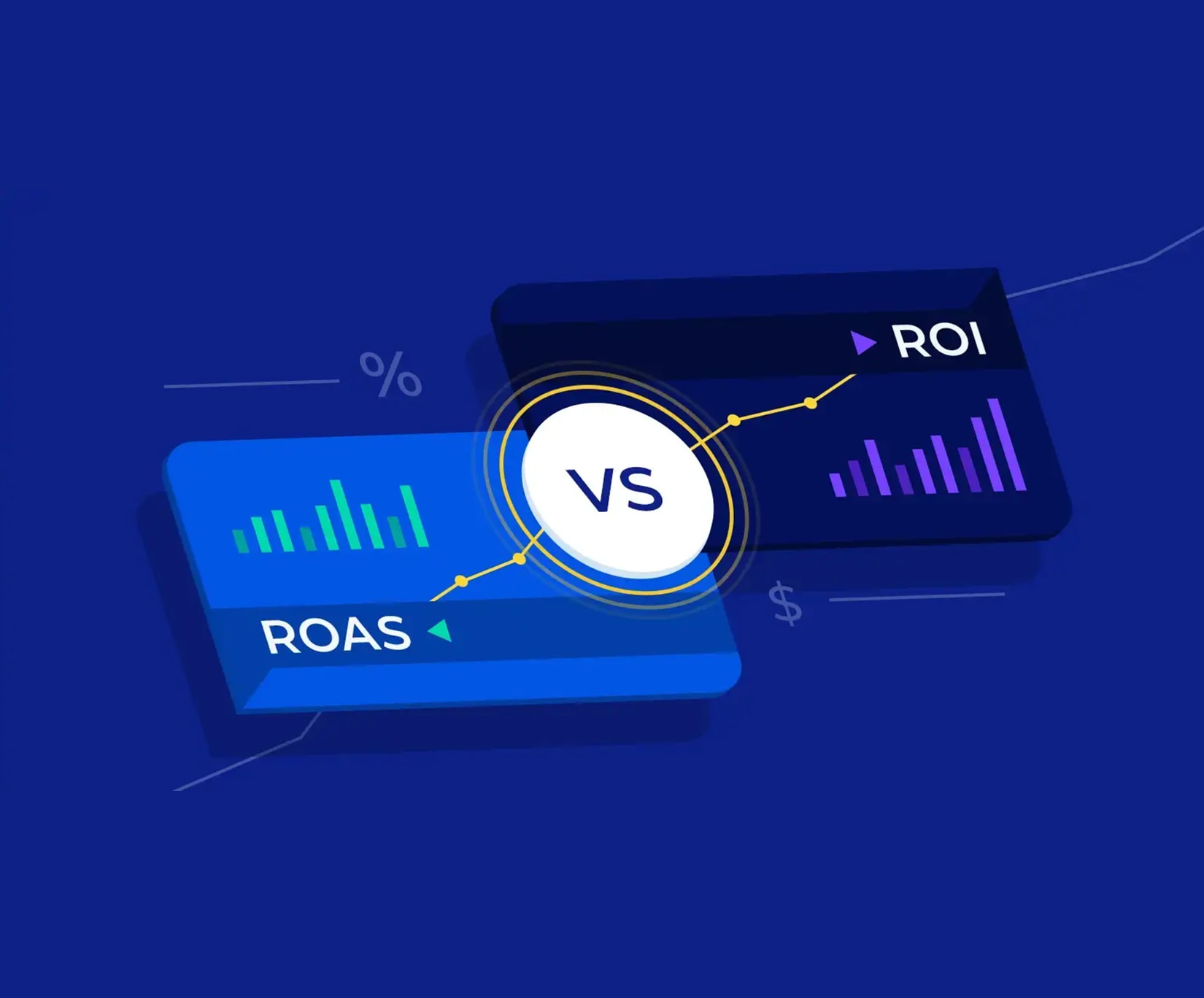Organizations use a variety of strategies, in monitoring their performance and evaluate whether their advertising and marketing strategies are helping them to achieve their goals. A couple of metrics that companies use to understand the effectiveness of their advertising and marketing campaigns are Return on investment ( ROI) and return on ad spend( ROAS). It is better to have a concise idea about the definition and differences between Roi vs Roas before you proceed ahead.

What is Roi?
Before you outline the differences between Roas vs Roi let us understand what is return on investment. This is the metrics to measure a yield on a particular investment related to its cost. In short it tells you how much you have got back in return for your investment.
Roi showcases the entire profitability of the entire marketing investment, and takes into consideration other factors like office costs, software licenses and staff costs. It gives you an idea whether the campaign was profitable enough to secure the continuation of the business.
The formula for calculating ROI is (Profit/ advertising spending) * 100
There is another formula that expressing ROI as a percentage. It entails identifying costs, dividing them, and then deducting costs from the investment’s final worth or the sum of its associated earnings.
What is Roas?
Roas signifies the returns on the ad spend. It is a metric that showcases the amount of revenue generated from a specific ad campaign. In short it is a metric that is expressed in percentage, showcasing the revenue from each advertising dollar spend. If you compare Roas vs Roi the difference of the former cannot be understated.
Suppose if you gain high quality users through a targeted ad campaign you could still be losing money if you have paid for the new users rather than you have gained from them. If you are wondering on how to calculate Roas you need to take out the revenue from the ad campaign, divide it by the cost campaign and multiply this number by 100 %.
There is another formula for calculating Roas which expresses it in the form of a percentage. It involves identifying and then subtracting the costs from the final value of the investment or total costs associated and dividing it by the costs.
Why do you think Roas matters?
In mobile marketing, user acquisition managers, opt for the Roas calculation in forecasting their marketing efforts. This ensures there is no deviation and they are on track. When you compare the performance tracks for each cohort, the marketers are able to arrive at calculated decisions about which ad formats or channels they need to invest. It also gives them an idea on which channels they need to drop.
The comparison between Roi vs Roas
Now we get down to the difference between Roi vs Roas. But before that it is evident that both of them enables a company in evaluating on how their ad campaigns perform. A careful observation indicates there are major differences among both the terms that can be considered when you are planning to implement a marketing or an investment strategy. Below are some of the major differences between Roi vs Roas
Purpose
Roi and Roas are valuable metrics for assessing a company spends their money. Though Roas indicates the amount of revenue that a company earns spending on advertisement and marketing. Roi differs that it measures the performance of an investment to determine how much revenue that investment has generated.
Organizations often use ROI to figure out the profitability of an expenditure, whereas Roas is to assess the difference of a single advertisement campaign.
Investment type
The companies can use them to measure the same type of investments, Roas measures the success of advertising along with marketing investments. Roi gives an idea about successful will be a particular form of investment that includes advertising and marketing efforts. It can help companies evaluate whether a particular campaign is profitable or not.
Spending type
Roi is a profitability measure that takes into account that accounts for other forms of organizational spending. Rois vs Roi differs in the way that the former relates only to ad spending and does not translate to other forms of organizational profits.
Companies resort to the use of Roas to measure whether ads generate sales revenue and impressions. This is bound to occur when a consumer views an advertisement.
Profits
Roas outlines on the amount of money an organization spends on advertisement as part of their earnings. Roi on the other hand evaluates organizations profit after deduction of all expenses. This means that on comparing Roi vs Roas the former is bound to provide a comprehensive representation of all profits.
This gives an idea whether an investment is beneficial and whether it has link up with the long-term strategy of the company.
Reliability
Roas and Roi are important metrics for arriving at important business decisions. Though Roas evaluates only marketing decisions, companies are known to compare it against Roi to have a better understanding about the overall profitability.
An example is that an ad campaign may have a higher conversion rate, but the cost of each conversion could be high as the company could experience a loss in profits. If you use Roi apart from Roas it provides companies with an in-depth analysis by taking into consideration other expenses like conversion costs.
Results
The results of Roi vs Roas provide organizations with different form of insights. Roas gives an idea to companies whether a particular advertisement campaign is effective. Roi guides you whether the campaign is profitable or not. Both are beneficial for organizations to calculate and use in the decision- making process.
Though Roas could be more useful in determination which advertising tactics are beneficial for generating sales. Roi may be helpful in determining which modules generate maximum profits for an organization.
Necessity
Both Roi and Roas showcase and differentiate the finances of an organization differently. Many organizations consider Roas as important for doing business. The reason being advertisement allows companies to attract more customers and enhance their brand recognition.
Roi helps an organization on how to use their investments to increase profits substantially. There may be a few investments that may be profitable than others as they have different objectives to accomplish. An example is a few companies may invest to lower their costs whereas others may investment to enhance their production capacity.
To conclude when you evaluate Roi vs Roas it is vital to understand this is an either-or situation. Both these modules are important for the marketing efforts and your business. Roas is used to optimize a short- term strategy whereas Roi helps in understanding long term profitability.
The ways to improve your ROAS and eventually ROI
After understanding the differences between Roas vs Roi let us figure out a few ways by which you can improve Roas and eventually Roi.
Setting benchmarks
Though Roas has been used by the marketers for some time, still there is no definite answer what is ROAS. You may consider a comparison of Roas vs Roi but you need to set benchmarks based on the app category, past campaigns and target audience.
Test and optimize
Another key aspect of improving your Roas is testing. You need to monitor your strategies, ad formats, ad creatives to ensure they are delivering the best results. Every element should be optimized methodologically that includes all possible iterations
Re- engage high value users
Invest a healthy amount of your budget in growing existing users by re engaging them. You need to spot the users who provide you with high Roas by showcasing them retargeted ads and persuade them to re purchase.
For more such blogs, Connect with GTECH.
Related Post
Publications, Insights & News from GTECH









